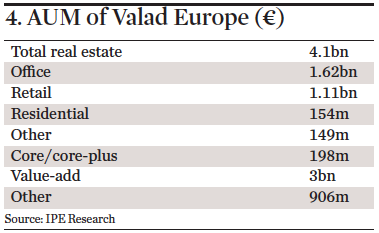Institutions are looking to increase their target allocations to real estate in 2016, with some caution over interest rate rises.
Findings from the 2015 Institutional Real Estate Allocations Monitor, conducted by Cornell University’s Baker Program in Real Estate and Hodes Weill & Associates, were presented today.
The report, which surveyed 3,000 institutions, found that target allocations continued to increase, albeit at a slowing pace.
The average target allocation to real estate is 9.56%, up 26 basis points from 2014, and up 66bps from 2013.
Next year, institutions are intending to increase their target allocations by an additional 29bps to 9.85%.
The report found that institutions were “increasingly cautious”, with fears of asset pricing and the potential for interest rate rises.
The company said investor sentiment declined from 6.4 to 5.7 between 2013 and 2014.
This year, investor sentiment has continued on a downward trend to 5.6.
Results of the survey indicate that public pension funds and sovereign wealth funds have increased their allocations to the sector.
Speaking on a webinar, Doug Weill, co-founder and managing partner at Hodes Weill & Associates, said investors remained “significantly underinvested in real estate”.
Institutional portfolios are 8.5% invested in the asset class, or approximately 110bps under-invested relative to target allocations.
Weill said that, despite the robust level of investment activity in the market and favourable investment performance, the amount by which institutions are under-allocated has increased over the past 24 months, from an average of 90bps in each of 2013 and 2014.
Investors are increasingly emphasising value-add, with institutions in the Americas the most focused on those strategies.
Institutions in Asia Pacific and the EMEA are emphasising core strategies.
Weill said institutions were generally decreasing their number of managers and “prioritising existing relationships”.
Institutions in APAC are focused on cross-border investments, while institutions in the Americas and EMEA continue to prioritise home markets.
Outbound capital flows from APAC are expected to increase over the coming years as institutions remain focused on US and European gateway markets.
“European institutions are the most bullish of institutions in the world today,” Weill said.
Institutional real estate portfolio allocations generated an average annual return of 10.9% over the past three years, with annual returns increasing since 2012.
The figure compares favourably with the current 8.2% average target return.
Weill said institutions were still cautious about allocating capital to emerging markets due to global market volatility, an overall flight to quality, currency depreciation and commodity price fluctuations.
Around 20% of institutions globally are actively allocating capital to emerging market strategies in 2015, while 30% of larger institutions are focusing on emerging market real estate, compared with 18% of smaller institutions.
Weill said the company was “surprised to see that smaller institutions have reduced their allocation so much”.
He added: “Endowments and foundations are perhaps finding less value in the market today.”
EMEA institutions are the biggest uptakers of ESG compared with institutions in APAC and the Americas, according to partner Will Rowson.
He said approximately 60% of institutions in the EMEA had a formal ESG policy, significantly higher than the 38% reported for APAC and 24% for the Americas.









